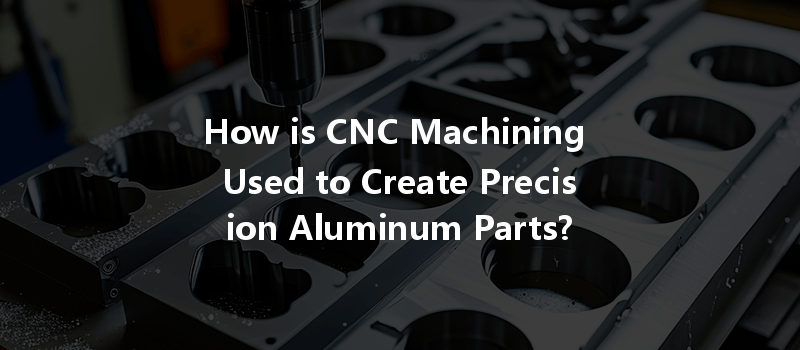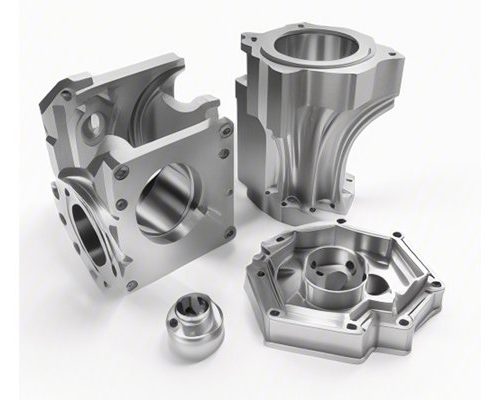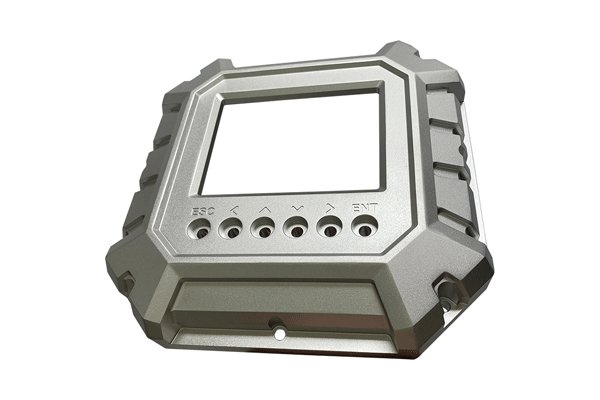When you hear the words “CNC machined aluminum,” what pops into your mind? Is it the slick design of your new laptop? Or maybe the lightweight, sturdy feel of a bike frame? Well, let me take you on a journey through this fascinating world! Think of this article as a treasure chest, containing all the rich insights and knowledge you need about CNC machined aluminum. Grab your metaphorical shovel, and let’s start digging!
What is CNC Machining?
To understand CNC (Computer Numerical Control) machining, let’s break it down a bit. Picture a highly skilled craftsman, an artist of sorts, who can transform a block of aluminum into precise, intricate shapes. Now imagine that instead of a person, it’s a cutting machine that carries out this craft, with a computer program telling it exactly what to do. It’s like having a robot artist at your command, turning raw materials into beautifully crafted parts with precision and efficiency.
Why Aluminum?
You might be asking, “Why use aluminum?” Ah, great question! Aluminum is like the superhero of metals; it’s lightweight, strong, and resistant to rust. This makes it perfect for various applications, from aerospace to automotive industries. Plus, it’s got a natural allure—who wouldn’t be drawn to that sleek, silvery finish? When machined, aluminum can achieve incredibly tight tolerances, allowing engineers to create parts that fit together like puzzle pieces. Isn’t that amazing?
The CNC Machining Process Explained
Now that we’ve established what CNC machining is and why we love aluminum, it’s time to roll up our sleeves and dive into the process.
Step 1: Designing the Part
Before any shavings hit the floor, the process begins with designing the part. Engineers use CAD (Computer-Aided Design) software to create a digital blueprint. Imagine sketching your dream house but in three dimensions. In CNC machining, the design must be precise. As they say, “measure twice, cut once.”
Step 2: Programming the CNC Machine
Once the design is ready, it’s time to turn it into a set of commands that the CNC machine will understand. This programming phase is akin to creating a recipe for your favorite dish. You need to know the right amounts and techniques; otherwise, things could go awry. The result is a G-code that instructs the machine on how to execute the tasks.
Step 3: Setup and Material Selection
With programming complete, the machine is set up. Think of this step like preparing a canvas before painting. The aluminum block is placed into the machine, and tools are selected based on the desired final product. The choice of the right aluminum alloy plays a crucial role here, as different alloys boast unique properties tailored for specific applications.
Step 4: Machining the Part
Now comes the magic! The CNC machine starts cutting, milling, and drilling the aluminum to achieve the desired shape. It’s almost hypnotic to watch; imagine watching a sculptor carve out a masterpiece, chip by chip, until a beautiful form emerges. This step comprises various techniques, such as CNC milling, turning, and drilling.
Step 5: Quality Control
A seasoned CNC operator knows that the devil is in the details. After machining, the parts undergo rigorous quality control checks. It’s akin to a chef tasting their dish before serving—it ensures everything is perfect! Tolerances are measured, and finish quality assessed, ensuring that every piece meets the required specifications.
Step 6: Finishing Touches
Finally, the parts might receive surface treatments or finishes. Be it anodizing for that captivating look or powder coating for added durability, these processes give aluminum its personality. It’s like dressing up for a night out; it not only enhances the look but also increases functionality.
The Advantages of CNC Machined Aluminum
As we glance back at our journey, let’s explore the many reasons why CNC machined aluminum is a favored option among manufacturers.
Like a seasoned archer nailing the bullseye every time, CNC machining boasts incredible precision. It can produce parts with tolerances as tight as ±0.001 inches. In industries where every millimeter counts, this accuracy is paramount.
Imagine baking a dozen cookies—when you find that magic recipe, you want your cookies to taste the same every time, right? CNC machining provides that consistency, yielding identical parts every time, which is especially valuable in larger production runs.

While the initial investment in CNC machines can be hefty, the long-term savings can be substantial. With lower material waste and faster production rates, companies can see a nice return on investment. It’s like switching from a gas-guzzling car to a fuel-efficient model—better performance and savings!
CNC machining allows for the creation of complex designs that would be impractical with traditional machining methods. It’s like letting your creativity run wild—no longer confined by manual limitations.
Applications of CNC Machined Aluminum
At this point, you might be wondering, “Where do we actually see CNC machined aluminum in the wild?” Well, it’s all around us!
Aerospace Industry
In the aerospace realm, weight matters. Aircraft must be designed optimally to save on fuel and ensure performance. CNC machined aluminum plays a vital role in crafting components that are lightweight yet durable. Think of it as the difference between carrying a backpack filled with feathers versus one full of rocks!
Automotive Sector
From chassis and engine components to decorative trims, CNC machined aluminum is a champion in the automotive industry. With a robust construction yet lightweight, it helps improve fuel efficiency and performance—all while keeping that sleek aesthetic.
Consumer Electronics
If you casually scroll through your tech gear, you likely use products containing CNC machined aluminum. Laptops, smartphones, and tablets often feature aluminum casings due to their superior strength-to-weight ratio and premium feel.
Medical Devices
In medical technology, precision is non-negotiable. CNC machined aluminum parts are found in devices and instruments that require high levels of accuracy, from surgical tools to imaging equipment.
Crafting the Future with CNC Machined Aluminum
Let’s glance toward the horizon of this fascinating field. The future of CNC machining is like an open road with endless possibilities ahead.
Advancements in Technology
The arrival of Industry 4.0 has introduced smart manufacturing into the mix. Machines can now communicate, analyze, and adapt to ensure greater efficiency. Imagine a factory where machines work together seamlessly like a well-rehearsed orchestra.
Sustainable Practices
As environmental concerns rise, so does the push for sustainability. Manufacturers are taking steps to recycle aluminum and use energy-efficient machines. It’s like finding a way to enjoy your favorite dessert while keeping your health in check!
Customization and Digital Twins
As customers demand more personalized products, CNC machining can rise to the occasion. Utilizing 3D modeling and digital twins, manufacturers can prototype and produce customized projects more efficiently than ever before.
Conclusion: The CNC Machined Aluminum Advantage
In this colorful, metallic world of CNC machined aluminum, we’ve uncovered the intricacies of the process, the benefits, and its far-reaching applications. It’s a blend of art, technology, and innovation that fuels multiple industries, ticking off a plethora of boxes that meet modern-day requirements.
So, where will you see the impact of CNC machined aluminum in the future? Is it in your next tech gadget, your vehicle, or perhaps soaring through the skies in a new aircraft? The possibilities are as limitless as the horizon itself!
If you’ve enjoyed this deep dive into CNC machined aluminum, share it with friends or colleagues who might benefit! And if you have any questions, drop them below. Let’s keep this engaging conversation rolling!



